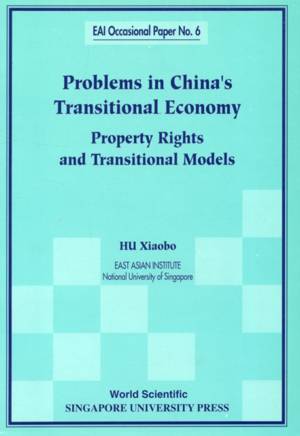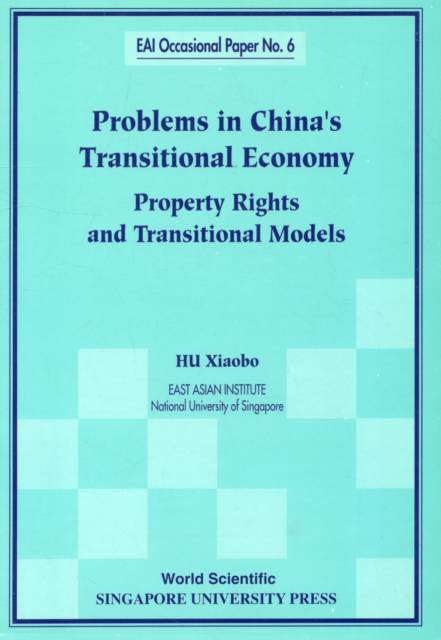
Door een staking bij bpost kan je online bestelling op dit moment iets langer onderweg zijn dan voorzien. Dringend iets nodig? Onze winkels ontvangen jou met open armen!
- Afhalen na 1 uur in een winkel met voorraad
- Gratis thuislevering in België vanaf € 30
- Ruim aanbod met 7 miljoen producten
Door een staking bij bpost kan je online bestelling op dit moment iets langer onderweg zijn dan voorzien. Dringend iets nodig? Onze winkels ontvangen jou met open armen!
- Afhalen na 1 uur in een winkel met voorraad
- Gratis thuislevering in België vanaf € 30
- Ruim aanbod met 7 miljoen producten
Zoeken
Problems in China's Transitional Economy: Property Rights and Transitional Models
Xiaobo Hu
€ 29,45
+ 58 punten
Omschrijving
1997 saw a major reform in China which signaled the move away from its traditional economy, when Jiang Zemin called off the debate on public versus private ownership. However, none of the existing theories can fully explain the transformation of the property rights system during the post-Mao reforms. The first part of this volume will reconceptualize the property rights reform in post-Mao China to provide a political economy explanation of why the transformation of property rights in China appears piece-meal.The success of the post-Mao reforms can be attributed to China's ability to integrate the experience of a variety of transition models. The second part of the paper investigates two distinct transition models, in light of the lessons from current Vietnamese reform. It explores the dynamics of political actions and analyzes the political reasons for economic reform.
Specificaties
Betrokkenen
- Auteur(s):
- Uitgeverij:
Inhoud
- Aantal bladzijden:
- 80
- Taal:
- Engels
- Reeks:
- Reeksnummer:
- nr. 6
Eigenschappen
- Productcode (EAN):
- 9789810235956
- Verschijningsdatum:
- 19/08/1998
- Uitvoering:
- Paperback
- Formaat:
- Trade paperback (VS)
- Afmetingen:
- 139 mm x 205 mm
- Gewicht:
- 108 g

Alleen bij Standaard Boekhandel
+ 58 punten op je klantenkaart van Standaard Boekhandel
Beoordelingen
We publiceren alleen reviews die voldoen aan de voorwaarden voor reviews. Bekijk onze voorwaarden voor reviews.











